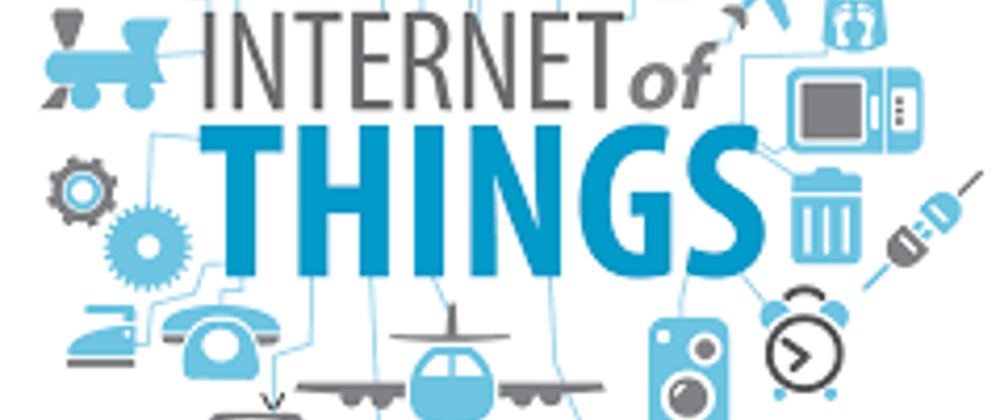Internet of Things is a pretty popular buzzword right now. But it’s not one of those fads. Internet of Things is an important concept that’s making changes to society right now.
Internet of Things can be defined as an extension of internet connectivity and other network connections to different sensors and devices or “things”. Computational Intelligence enhances the functionality of the device, to make the device do what it did before, but better.
IoT Devices have a main function separate from the computation part.
Illustrating Car as IoT Device.
A car is an IoT device, okay, the reason I call it this is, because if you look at a car, It’s a thing, clearly. You look at a car, an old car, there’s an old car, a 50s car maybe. Early cars had a certain interface, right? You drive, you have a steering wheel, gas pedal, brakes, and so on, the radio, for example, is a simple and straightforward interface. Now that interface, it was implemented with electrical and mechanical controls, but there was no computational intelligence. Cars back then didn’t have computers in there or processors doing anything. There was electricity, there was the mechanical stuff, but that was it. So that was an original device, it’s not IoT, from the 1950s. But now cars have lots of computational intelligence. Let’s take a look at this. So, 21st-century car. So what is that? Looks like a Prius I think. This car, its got lots of chips in it, lots of processors. This car might have over 50 processors in it doing different tasks.
Prius image
For instance, its got an anti-lock braking system they all do these days and the anti-lock braking system, it’ll have its own processor dedicated just to anti-lock braking. and so, its got that. Its got fuel injection, right? Fuel injection system, it’s gonna have another processor dedicated to that. And it’s also got a stereo, say. The stereo system’s got to have its own processor, but every subsystem inside the car has its own processor. But the thing about this car that you would notice is that even though it has this computational intelligence, it has the same basic interface as that 50s car. So you drive this car pretty much the same way. Now the 50s car, it probably had a manual transmission, I’m gonna guess because it’s the 50s. And today cars have automatic transmission. But besides that, it has the same interface, the same steering wheel, gas pedal, brake. So you could train somebody to drive on the 50s car and they could drive this new car quite easily might I say, even though this new car is enhanced with all these new features. So, that’s the thing about IoT devices, they have a very simple interface. They want to be easy to use, they want to give you the benefit of this computational intelligence. Now you have anti-lock braking, for instance, which prevents the tires from locking, so you don’t want the tires to skid compared to the road, right? They should always stay in good contact with the road. But if you brake hard when moving fast, the car will skid and the tires will not move but the car does. So anti-lock braking tries to prevent that. Now, before anti-lock braking, what would you do, I remember when I learned how to drive on snow. You skid a lot, right? So what you do, is when you do a hard break, you’ll pump the breaks, right? Manually pump the breaks and you’d have to remember this, to be pretty consciously aware enough to remember to do this. Anti-lock breakings do that for you, all right? Excellent braking devices, they take care of that for you. This is a great benefit to. New learners don’t even know about pumping breaks. They don’t need to learn that because anti-lock breaking takes care of it. So the computational intelligence is helping you, relieving you of burdens that you don’t have to deal with. The interface is beautiful. You don’t have to worry, you just hit brake pedal just like you used to. It just does the job better. It just does more than what you want it to do, efficiently making everything easier for you. Now, a typical car like this, it has computational intelligence, now whether or not it has networking is a different thing. Cars nowadays, actually these days, are having more and more networking and you may have heard of this in the news, but cars are networked, so you can, for instance, remote start a car.
Logistics
Let’s talk about logistics. Tracking things okay, logistics. So say you are part of the supermarket or some big company or the military, something like that, and you want to move lots of things between different places on a certain time scale, right? You need to get these from this manufacturing place to this sales place on a schedule. That’s logistics and the military is all about logistics, right? We are waging a war. We need to get these devices from one place to another. So you wanna move things. Say you’re part of the supermarket, and you would want to track these devices that you’re moving. You wanna make sure that they are moving in a certain time frame and you want to be able to know at any time, say, where is box number whatever, right? How many boxes do we have of this type of device at this location at this time? and you need to be able to track that dynamically, so you can get a count for things like weather difficulties, right? Maybe the planes are shut down so you can’t move enough devices from here to here. So you need to know how many are here so you can reroute things.
References: Coursera and assetinfinity.com
Special Thanks to : Pratyusha Katti

For further actions, you may consider blocking this person and/or reporting abuse






Top comments (0)